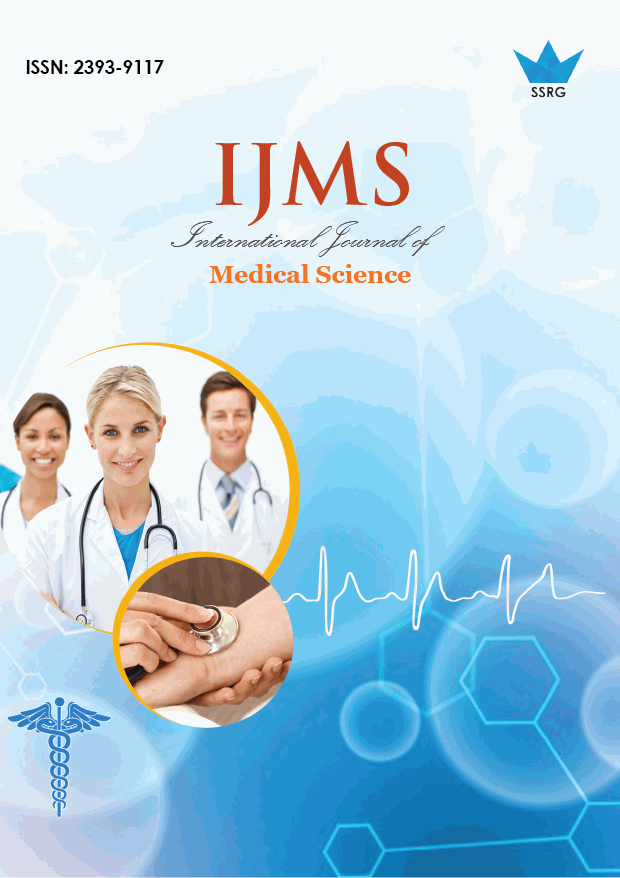Transforming Medical Diagnostics with Artificial Intelligence

| International Journal of Medical Science |
| © 2025 by SSRG - IJMS Journal |
| Volume 12 Issue 3 |
| Year of Publication : 2025 |
| Authors : Labdhi Jain |
How to Cite?
Labdhi Jain, "Transforming Medical Diagnostics with Artificial Intelligence," SSRG International Journal of Medical Science, vol. 12, no. 3, pp. 1-6, 2025. Crossref, https://doi.org/10.14445/23939117/IJMS-V12I3P101
Abstract:
This review talks about how Artificial Intelligence will bring about a sea change in medical diagnosis, particularly in imaging, genomics, and personalized medicine. AI algorithms are developed to increase the speed and accuracy of interpretation of medical images like X-rays and MRIs, greatly improving diagnostic accuracy and allowing rapid interventions. AI also supports radiologists by outlining areas of concern, reducing human error, and optimizing workflow efficiency. The applications of AI in genomics bring out the exact identification of genetic mutations, which can help a doctor derive a treatment plan based on the needs of each patient. However, there are many challenges to integrating AI into healthcare, such as possible biases, integration problems, and high costs that may increase healthcare disparities. Unless these challenges are addressed, there could be unequal creation and access to AI-driven diagnostic tools, and their potential for improving patient outcomes will not be completely realized.
Keywords:
Artificial Intelligence, Diagnostic Accuracy, Healthcare Innovation, Medical Imaging, Personalized Medicine.
References:
[1] Ana Barragán-Montero et al., “Artificial Intelligence and Machine Learning for Medical Imaging: A Technology Review,” Physica Medica, vol. 83, pp. 242-256, 2020.
[CrossRef] [Google Scholar] [Publisher Link]
[2] Andreas S. Panayides et al., “AI in Medical Imaging Informatics: Current Challenges and Future Directions,” IEEE Journal of Biomedical and Health Informatics, vol. 24, no. 7, pp. 1837-1857, 2020.
[CrossRef] [Google Scholar] [Publisher Link]
[3] Kevin B. Johnson et al., “Precision Medicine, AI, and the Future of Personalized Health Care,” Clinical and Translational Science, vol. 14, no. 1, pp. 86-93, 2021.
[CrossRef] [Google Scholar] [Publisher Link]
[4] Nicholas J. Schork, “Artificial Intelligence and Personalized Medicine,” Cancer Treatment and Research, vol. 178, pp. 265-283, 2019.
[CrossRef] [Google Scholar] [Publisher Link]
[5] Study Reveals Why AI Models that Analyze Medical Images Can Be Biased, 2024. [Online]. Available: https://news.mit.edu/2024/study reveals-why-ai-analyzed-medical-images-can-be-biased-0628
[6] IBM Data and AI Team, AI Bias Examples, 2024. [Online]. Available: https://www.ibm.com/think/topics/shedding-light-on-ai-bias-with real-world-examples
[7] Electronic Health Records, CMS, 2023. [Online]. Available: https://www.cms.gov/priorities/key-initiatives/e-health/records
[8] Reabal Najjar, “Redefining Radiology: A Review of Artificial Intelligence Integration in Medical Imaging,” Diagnostics, vol. 13, no. 17, pp. 1-25, 2023.
[CrossRef] [Google Scholar] [Publisher Link]
[9] Telemedicine vs. Teleradiology: Key Differences Explained, Medrockerstech, 2024. [Online]. Available: https://medrockerstech.in/telemedicine-vs-teleradiology
[10] ClindCast LLC, Top 5 Advanced AI Use Cases in Healthcare, Artificial Intelligence, 2024. [Online]. Available: https://www.clindcast.com/top-5-advanced-ai-use-cases-in-healthcare/
[11] Generative Artificial Intelligence in Healthcare Market Size, Spherical Insights, 2033. [Online]. Available: https://www.sphericalinsights.com/reports/generative-artificial-intelligence-ai-in-healthcare-market
[12] Pu Wang et al., “Real-Time Automatic Detection System Increases Colonoscopic Polyp and Adenoma Detection Rates: A Prospective Randomised Controlled Study,” Gut, vol. 68, no. 10, pp. 1813-1819, 2019.
[CrossRef] [Google Scholar] [Publisher Link]
[13] Generative AI in Healthcare Market Size, Market Us. [Online]. Available: https://market.us/report/generative-ai-in-healthcare-market/

 10.14445/23939117/IJMS-V12I3P101
10.14445/23939117/IJMS-V12I3P101